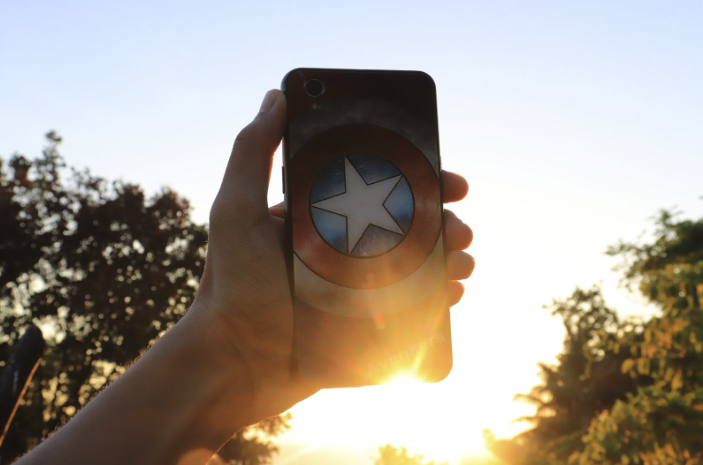The global smartphone market is not only growing every year, but its growth rate is on the rise. For 10 years since 2011, global sales have tripled to $1.5 million. There are several reasons for this: the growth of the world’s population, improved users’ awareness of digital technology, and the emergence of very affordable models. Therefore, it is not surprising that mobile accessories are also becoming more popular and diverse. In 2019, this market segment was estimated at more than $81 million and is forecasted to grow another $71 million by 2029.
But despite the ubiquity of phones, of course, there are certain pitfalls. They include a huge number of phone models with specific case size requirements. In addition, these products are not of primary or even daily demand. So if you want to develop a business strategy first (which is really important), here’s an 8-step guide on how to launch a print-on-demand phone cases project.
Table of Contents
1. Your target niche
Initiating any project starts with researching similar offers. Identify the most popular products (demand) and compare the assortment in the stores (supply). Try to focus on commercially successful brands. But you should know how to cope with high competition, for example, by selling phone covers from unusual (eco-friendly) materials or with unique (handmade) designs. Study the requirements of the target audience regarding design, phone models, materials, price, and so on. This way you will analyze all the possible options and find the best one that you can easily produce and offer to your clients.
2. Types of phone cases
It is obviously related to the first step, but since you need to have a better understanding of the products that you will sell, we have highlighted this knowledge into a standalone item. You can use Google Trends to analyze user requests or surf through the marketplaces (Amazon, eBay, Etsy) or social networks (Pinterest). Here are the most common concepts of covers:
- Bumper: protects the edges and sides of your phone.
- Back cover: protects the sides and back of your phone, while keeping buttons and connectors accessible.
- Book/wallet: protects the phone from all sides and is often equipped with an additional compartment for money/cards.
- Flip: its feature is opening vertically downward cover.
- Battery: a case with a built-in battery for charging.
- Wrist: has an arm clip and is suitable for sports activities.
Choose your future product category based on the age and occupation of your customers. Sportsmen and businessmen will like practical Wrist and Book/wallet cases, while teenagers will choose inexpensive options with bright designs.
3. Materials and Design Ideas
The choice of material will affect not only the cost of the final product but also the technology of applying the design. The simplest and cheapest print-on-demand phone cases are made of plastic, silicone, or rubber. You can put a picture of any complexity on plastic. The choice of more expensive materials (leather, leatherette, or suede) will increase the cost of not only the final product but also the way the pattern is applied, such as hand embroidery. And for eco-friendly wood covers, you will have to do complex engraving.
Ideas and styles can be made up by you or picked up on Google, social networks, and stores. But keep in mind that customers will only buy a case with a design you created if they like it.
4. Prices
By this stage, you should have studied the market and now you know the approximate cost of your products. Nevertheless, you need to understand what should be included in the price of a case: the cost of its production, promotion in the store, and your net profit. As for the last component, we advise you not to be too greedy (the markup should not be more than half of the cost of the entire batch). Set fair prices that attract customers.
5. Your brand philosophy
The easiest way to stand out from the many vendors with similar products is to make your brand recognizable. Give your store an original name, create a logo, come up with a slogan. All of these things should be memorable and match the products in your store.
Try to stick to a consistent style and color palette – after all, you are a store with designed merchandise, and your brand design should be on a good level.
6. Creating your webshop
There are plenty of e-commerce sites on the Internet, such as Wix, Shopify, etc. Before you decide on one (or more) of them, familiarize yourself with the rules of creating an online store. You may need to buy a tariff plan that gives you access to professional website development tools and POD applications. If you set up a store on Shopify or Etsy, check PodZa print-on-demand software, which provides a comprehensive set of tools for launching and managing POD sales.
7. Your print-on-demand partner
Integrating the POD services finishes your full-fledged, functional webshop. However, be aware that different sites work with various POD services. Wix works with Printify and Printful, and Shopify works with CustomCat and TeeLaunch. Any collaboration, be it print-on-demand sites, drop-ship partners, or e-commerce platforms, requires additional costs and playing by “their” rules. Read the terms and conditions of the collaboration carefully.
Once you choose your partner, follow the instructions for integrating and setting up the service. Add various information: terms of payment and delivery, the product catalog with pictures, and detailed descriptions. Don’t ignore the built-in tips and recommendations, this software is designed for professional business.
8. Getting your store up and managing
Your store is ready to be opened! Now the process is almost completely automated. Your POD partner will be informed about the new order and can get to work. After the order has been printed, the partner will pack and ship the order. All you will have to do is keep track of the execution of the order and update the store assortment.


